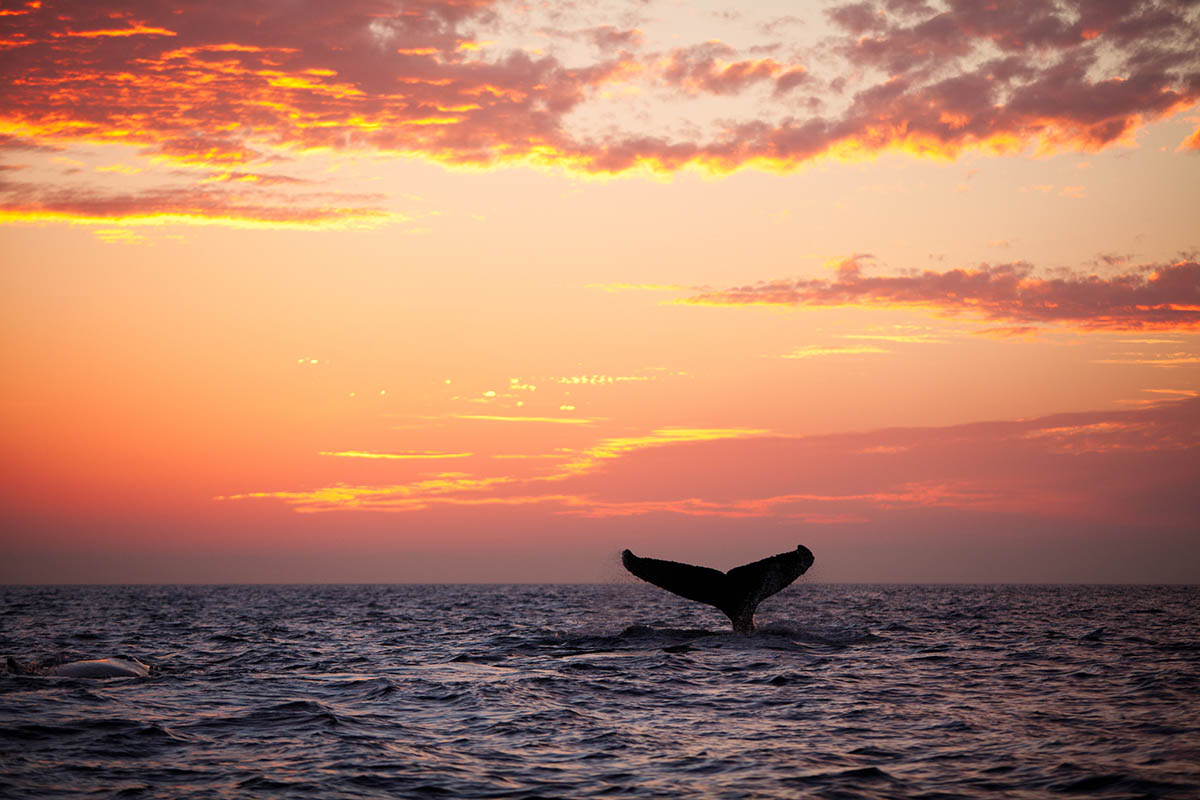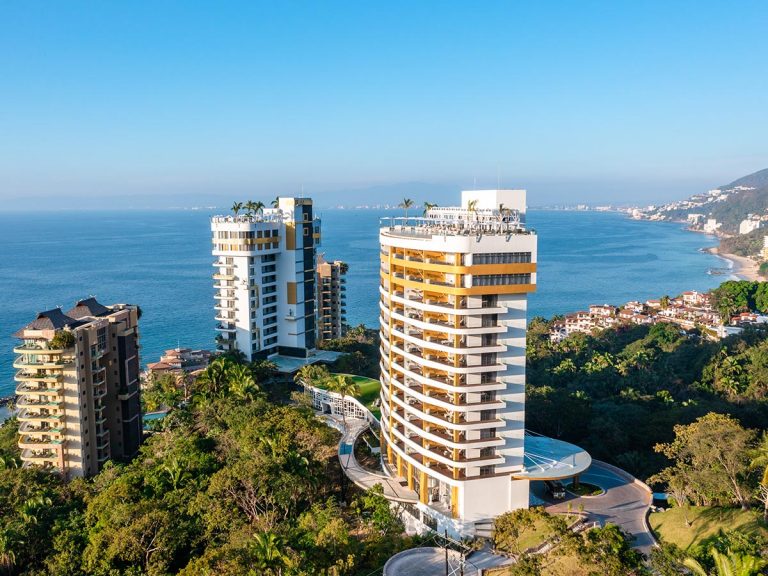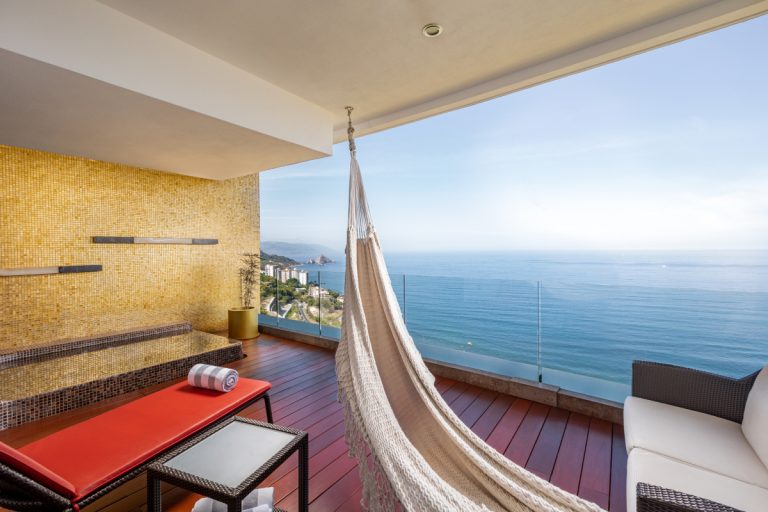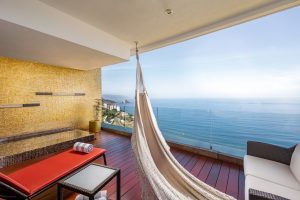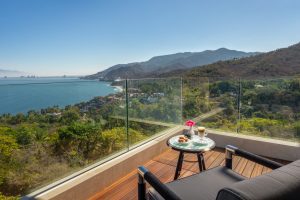One of the magical experiences the Bay of Banderas offers is the opportunity for an intimate encounter with majestic humpback whales. Whale watching season takes place during the months of December through March. Hundreds of whales migrate down from the north to the Puerto Vallarta area to mate and give birth.
These enormous but gentle giants are full of energy, and they love to frolic in the warm waters of the bay. Their knobbly heads and flippers that span out like the wings of an airplane are in full view as onlookers are treated to a world-class performance of fantastic breaching, lobtailing and pectoral slapping.
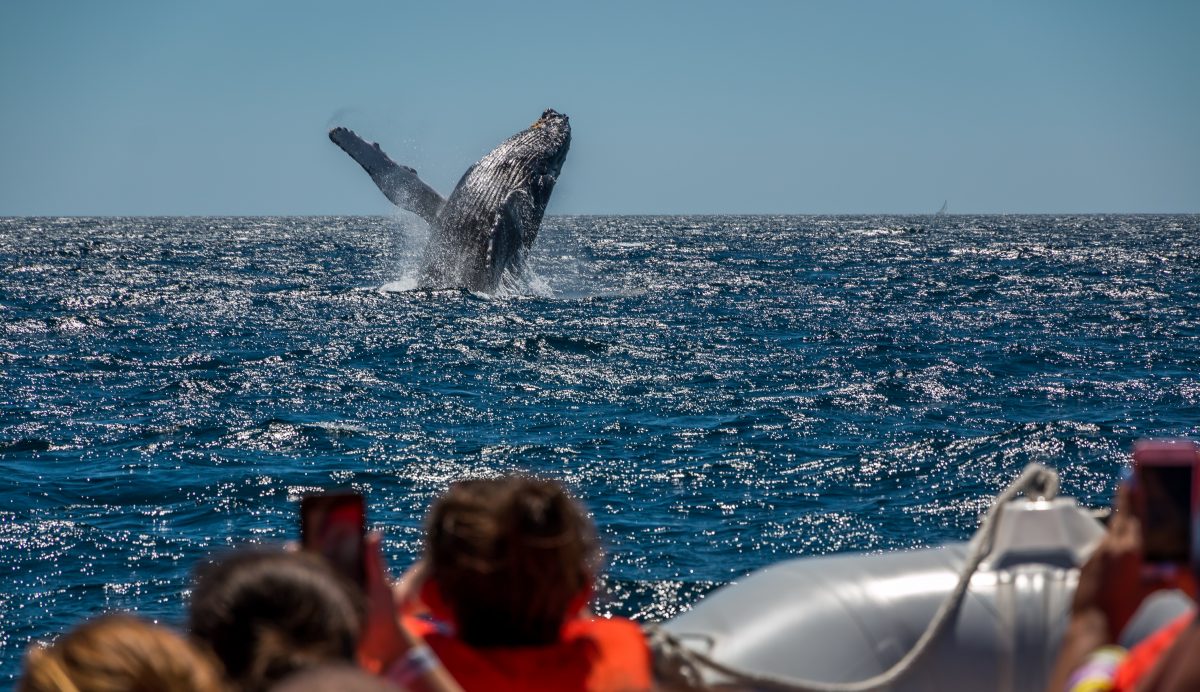
Often, these breathtaking shows can even be observed from the beach as you’re basking in the sun and sipping your ice-cold beverage. If you notice a cluster of boats in one area, keep your eyes peeled for a spouting plume of water, as it is likely there are whales nearby.
Whale Watching Tours
You can secure front row seats to a once in a lifetime, up close and personal whale encounter with a professional whale watching tour. There are many excellent tours and reputable tour providers departing frequently from Marina Vallarta.
There is a tour for everyone depending on your preference. Some tours offer different durations, departure times and return times, as well as food and snack options to round out your whale watching experience.
There are many eco-friendly tour guides who work to ensure careful preservation of the natural habitat as well as the safety of the whales and their babies. Ecotours Vallarta employs expert biologists who lead you through the marvelou humpback world in a boat especially designed for whale watching.
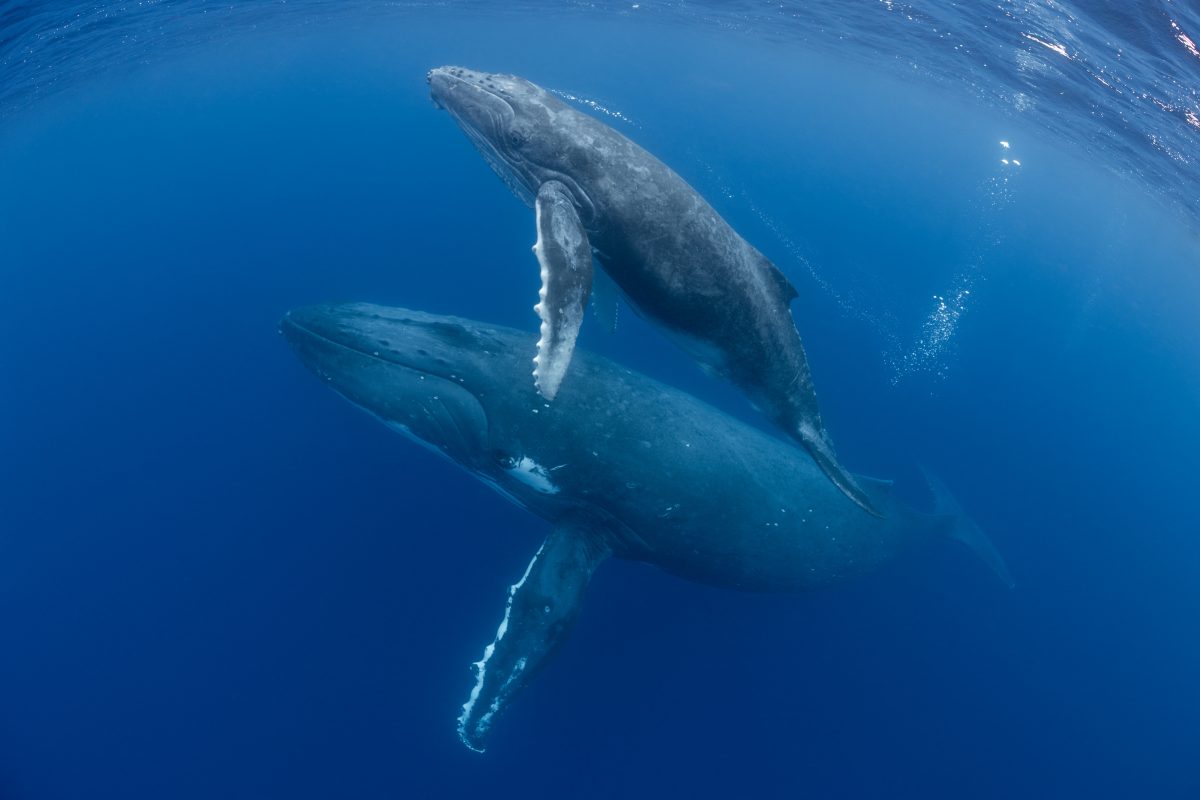
Thanks to the hydrophones available on the boats, you will be offered an opportunity to listen to the males singing. Male humpbacks sing the longest and most complex songs known in the animal kingdom, and it is a sight to behold a person hearing the haunting songs for the first time. The song of the humpback is one of nature’s most enchanting mysteries… and one that scientists still have more questions about than answers to.
Alternative Tour Options
For something a little more personal you can hire a panga from Boca de Tomatlán for a private tour. The local captains are experienced in whale spotting and will navigate to the perfect location for the best possible view, while still observing the laws that dictate the allowable distance between the boat and the whales.
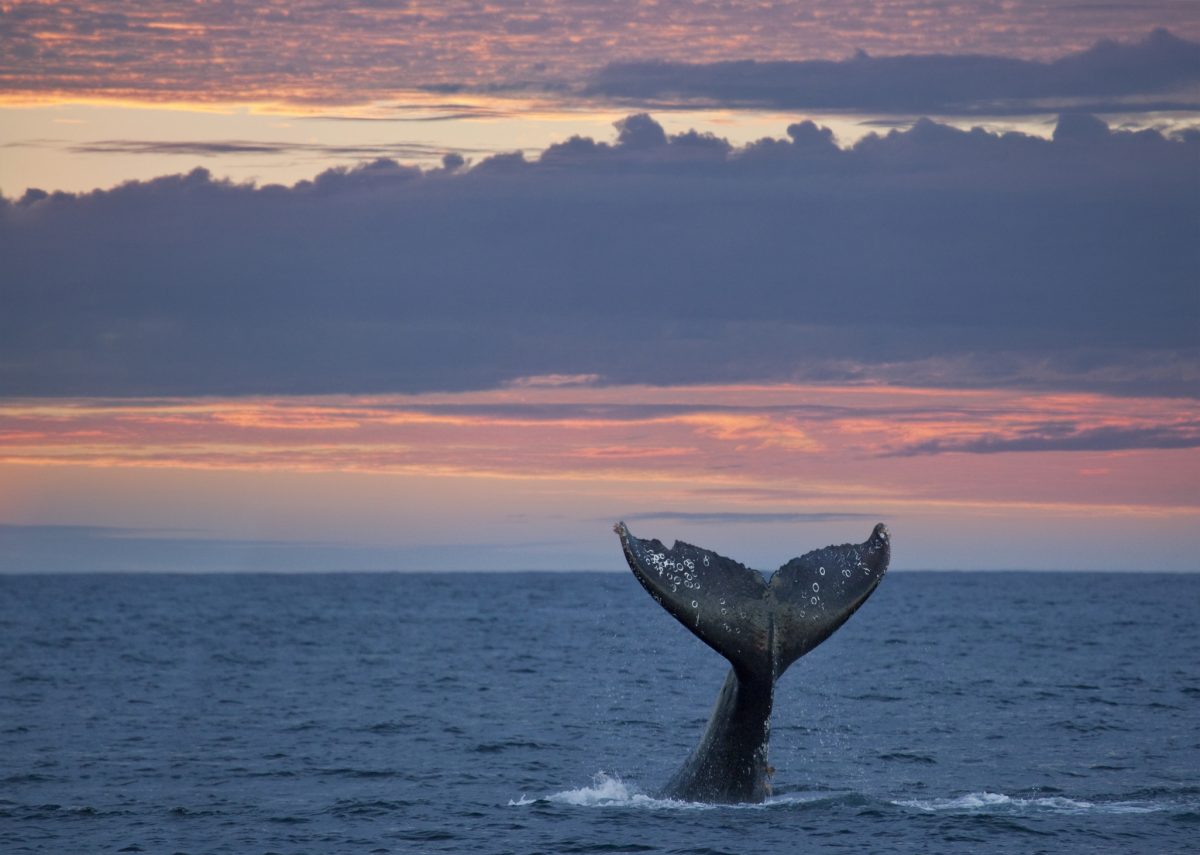
Alternatively, if you are looking for more bang for your buck, you can take in the entertainment offered aboard the Marigalante pirate ship. Chances are, you will be presented with a double acrobatic act as the whales jump alongside pirates….inadvertently offering you a 2-in-1 excursion!
Whale Facts
Adult whales are approximately the size of a school bus and can weigh anywhere between 25-35 metric tons. They hunt and feed in the summer months and then fast during mating season living off the blubber reserves so they can focus on migration and mating.
Humpbacks don’t have any teeth so they consume krill, plankton, and small fish. They require around 1.5 tons of food every day. In order to find that much food each day the whales have a diverse repertoire of feeding methods, including the bubble net technique.
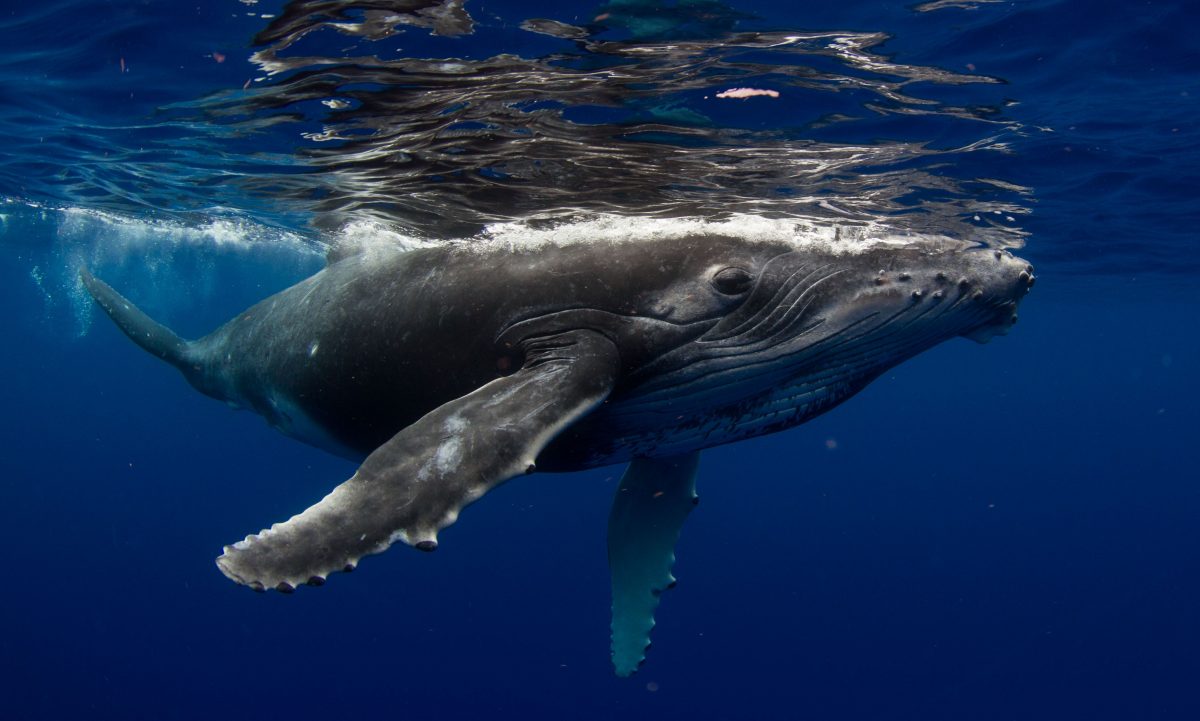
In this technique, the whales work together swimming up in a shrinking circle blowing bubbles. The shrinking ring forces the fish upwards and the bubbles keep them entrapped long enough for the whales to come shooting up behind with open mouths ingesting thousands.
The annual migrations usually begin in late autumn as they swim thousands of miles to their winter breeding grounds. Their migrations are the longest known for any mammal on Earth. The distance between their feeding and breeding areas can be up to 8000 km or more, one way.
A female humpback has a calf every two to three years. The newborns are 10-15 feet long weighing in at almost a ton. Nursing for almost a year, the babies can consume 600 liters of milk per day. The calves only stay with their mothers for approximately one year, so they have only one chance to learn the migration route.
Additional Sightings
As you are on the lookout for these acrobatic whales, you will likely have the privilege of sighting and observing many of the other fascinating animals that frequent or live in the bay.
Dolphins are always a highlight and treat to see. With their permanent grin, these playful mammals love to surf alongside in the waves of the boat and race around like a bullet with the odd quick jump or twirl thrown in. The different types of dolphins can be seen in the bay, including bottlenose dolphins, spotted dolphins, rough-toothed dolphins, and spinner dolphins.
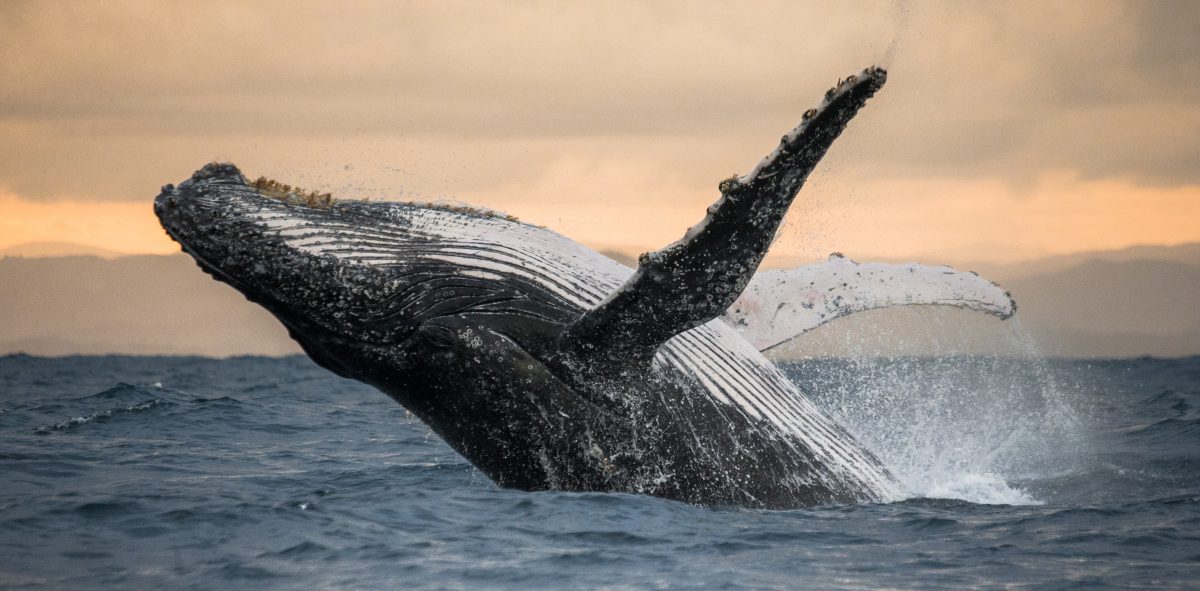
Puerto Vallarta is fortunate to be an area where sea turtles come to lay their eggs. Amazingly, you may see them pop up for air while en route to lay eggs on the very beach where they were probably born themselves.
You may catch sight of a manta ray gliding under the clear waters out for a little swim or a quick feast. “Manta” means blanket or cloak in Spanish, and appropriately describes the rays with their large flat diamond-shaped bodies.
Although less likely in the bay, you may also be fortunate enough to see orca or false killer whales.
If you are out on the Bay waters between December and March, looking or not, you’ll likely see one of these grand mammals. You can capture stunning footage and photos but nothing will compare to the humbling experience of witnessing these big and beautiful creatures with your own eyes just a few meters away. You can be assured that it will be an adventure you will never forget!
